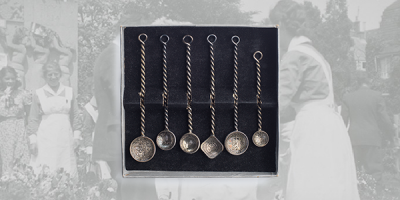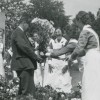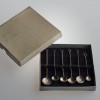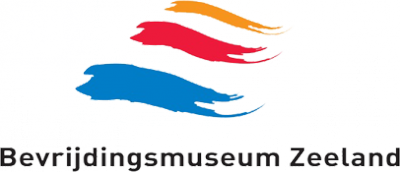Resistance Tea Spoons
From the collection of the Zeeland Liberation Museum

Varied dimensions, 1940-1945
In 1941, the Niehot family of The Hague welcomed its fourteenth child to the world. The midwife, Nelia Epker, suggested giving Dutch Royal names to the newborn baby. A birth announcement was placed in the newspaper for Irene Beatrix Wilhelmina Juliana Niehot. It was a symbolic gesture of resistance to maintain morale.



There were many gestures of this kind during the war, like these tea spoons made from coins engraved with images including Queen Wilhelmina and the Dutch Republic Lion (States Lion). People also made necklaces and pendants from these coins as well as pins that they secretly wore under a coat lapel. Arts & crafts done by people at home also resulted in pins with the letter W, signifying Wilhelmina. The letters OZO were also popular. When somebody yelled ‘O-zo’ on the street, they meant: Oranje zal overwinnen! (Orange shall overcome!) These spoons were made to keep up people’s spirits, with the conviction that the Dutch would indeed win the war.



